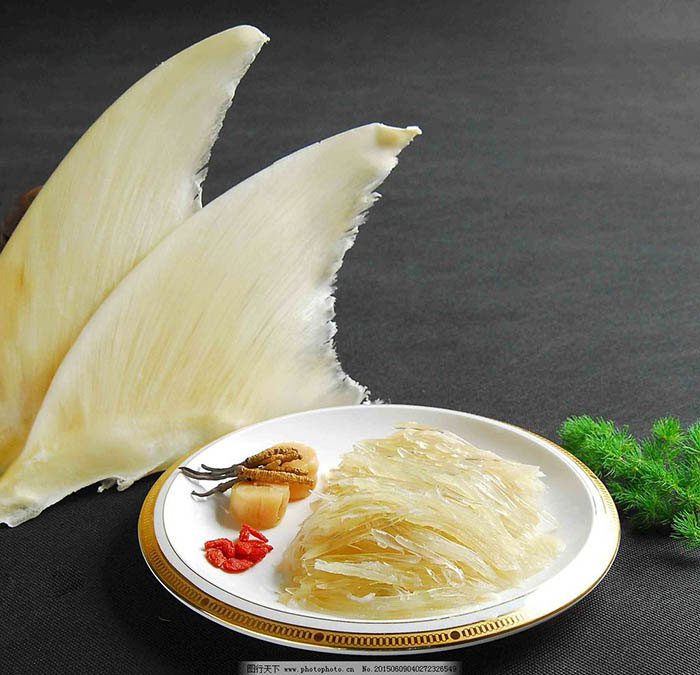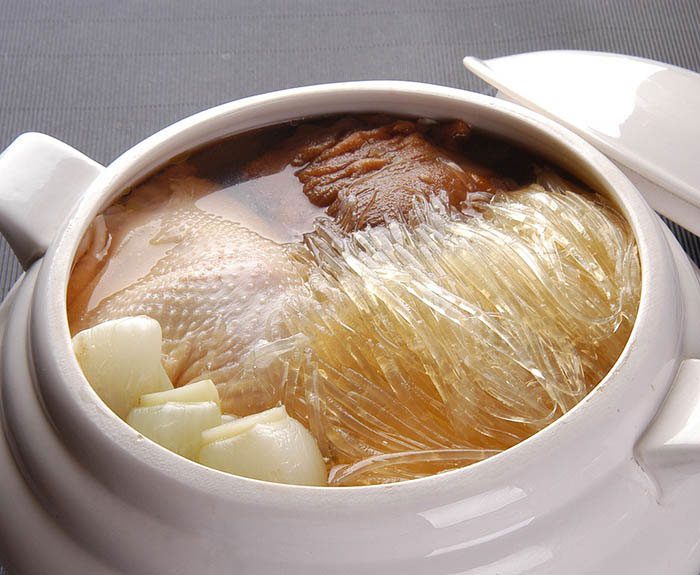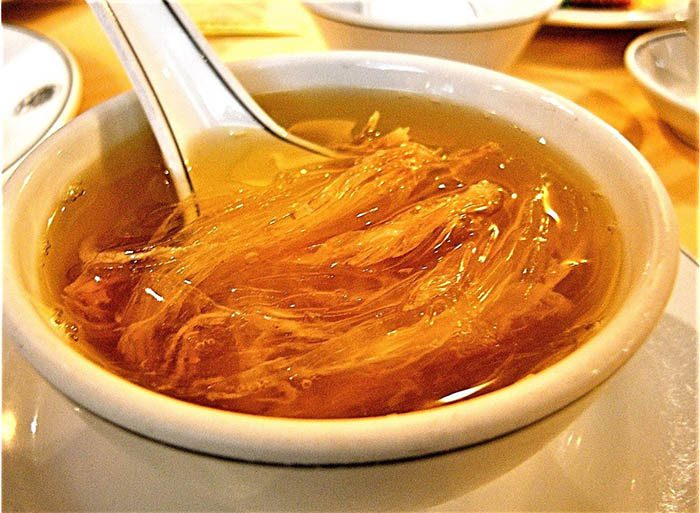According to historical records in China, shark fins have been considered a rare delicacy since the Ming Dynasty. By the time of the Qing Dynasty, shark fins became an indispensable dish at grand court banquets. By the end of the Qing Dynasty, the fame of shark fins spread beyond China.

Shark fins are considered a rare delicacy.
Previously, only wealthy and noble families could afford to eat shark fins, but now the buying and selling has become much easier. High-end restaurants in China sell shark fins, with prices starting at just a few dozen yuan per bowl, making it accessible to most people.
This is due to the abundant supply; however, over time, current fishing technologies combined with increasing consumer demand have led to disastrous consequences for shark populations.

The fins of the shark are the most valuable part.
Because the meat of the shark is of very low value, while its fins are the most valuable part, fishermen often cut off the fins and throw the shark carcasses back into the sea. This method saves costs, allows them to catch more sharks, and creates more space on the boat for storing fins.
These finless sharks cannot swim, may die, or become prey for other creatures. The United States has banned this type of fishing since 2000.

The United Nations estimates that 10 million sharks are killed each year. (Illustrative image)
In August 2001, the U.S. Coast Guard intercepted a shark-fishing boat near San Diego and found no shark carcasses onboard but discovered 32 tons of shark fins, equivalent to over 20,000 sharks killed.
The United Nations estimates that 10 million sharks are killed each year. The actual situation may be much more severe. According to a 2006 study by Imperial College London, 38 million sharks are killed annually due to the shark fin market. Additionally, the shark fin market continues to expand, with an estimated growth rate of about 5% each year.

The deliciousness of shark fin soup primarily comes from accompanying ingredients.
In reality, shark fins themselves have little flavor and a slightly fishy smell; the taste of the soup made from them primarily comes from the accompanying ingredients. Therefore, shark fins can easily be faked with materials such as gelatin.
Why are shark fins so popular? This is related to Chinese culture, where they are believed to be a premium tonic.
Traditional Chinese medicine holds that shark fins have the effects of tonifying qi, nourishing the liver, and stimulating appetite. Meanwhile, modern food enthusiasts believe that shark fins are an extremely nutritious part, rich in collagen, which helps prevent osteoporosis, cancer, beautify skin, and prolong life.
In fact, from a nutritional perspective, shark fins do not have any special nutritional value. The main component of shark fins is collagen—a type of protein.
No matter how miraculous protein may be, consuming it does not have a direct effect on the body. Protein is digested into amino acids in the stomach and intestines, and then absorbed by the human body.

From a nutritional perspective, shark fins have no special nutritional value.
Thus, regardless of which type of protein you consume, the result is the same; it is digested into amino acids. There are 20 types of amino acids that make up proteins.
Some proteins found in eggs, milk, and meat contain all 20 types of amino acids, known as complete proteins, and have higher nutritional value. In contrast, some plant proteins are incomplete, lacking certain amino acids, and have lower nutritional value.
Therefore, the nutritional value of shark fins is low and cannot be compared to fish meat that contains complete proteins.
Regardless of the perspective taken, consuming shark fins is not beneficial; on the contrary, it can be harmful to health. The mercury and heavy metal content in shark fins is much higher than in other fish.
This is due to industrial wastewater continuously being discharged into the ocean, raising the heavy metal content in seawater and entering the bodies of marine organisms. Sharks often consume other fish, so the heavy metal accumulation in their bodies is also higher.
In 2001, a random test of shark fins in a Chinatown market in Bangkok showed that 7 out of 10 shark fins contained mercury levels 42 times higher than the permissible limit.
A 2008 onsite inspection of the Hong Kong market found that 8 out of 10 shark fins contained mercury levels 4 times higher than the permissible limit.

The mercury and heavy metal content in shark fins is much higher than in other fish.
Cooking does not eliminate the toxicity of mercury or heavy metals.
After consuming shark fins, mercury and other heavy metals enter the body, making them difficult to excrete, and they accumulate within, potentially harming the central nervous system.
Additionally, it can cause dizziness, headaches, muscle tremors, mouth ulcers, kidney damage, sexual dysfunction, and miscarriages…
Eating shark fins is similar to consuming bird’s nests, bear paws, tiger bones, rhinoceros horns, and bear bile. All are regarded as precious medicinal materials, part of the traditional Chinese health-boosting culture. However, these foods lack scientific support for their benefits to human health.
The over-reliance on the effects of shark fins poses a serious threat to the survival of shark species worldwide. While banning shark fin consumption is challenging, you should consciously refuse to partake in this dish.





















































